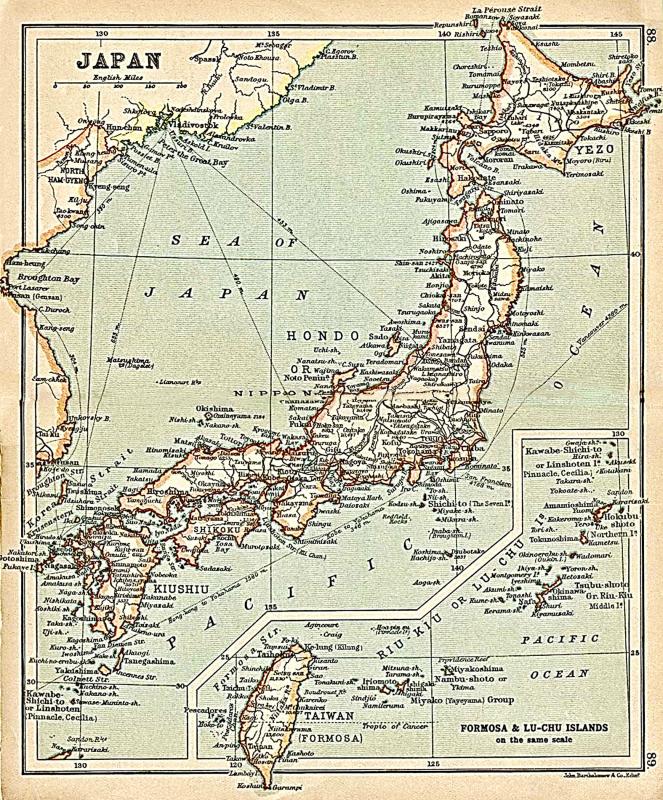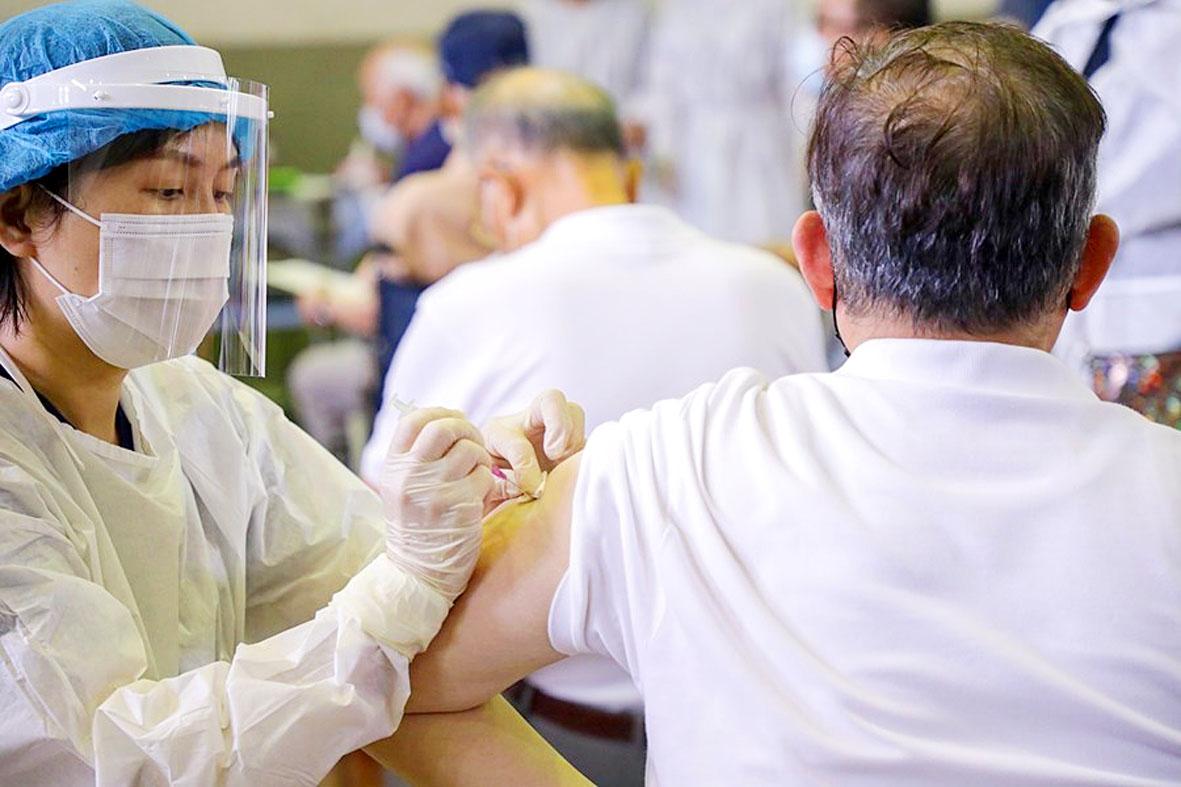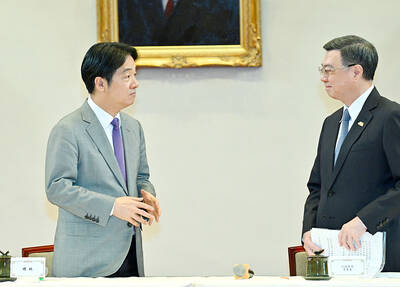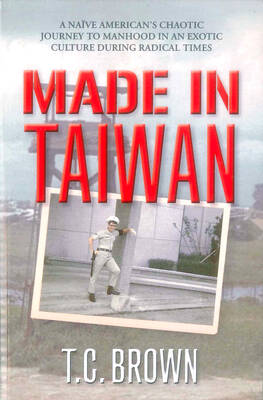In 1894 Hong Kong was the jumping off point for the great third wave of bubonic plague, which had originated in Yunnan back in the 1850s and was slowly working its way around Asia. Spreading in south China, it eventually reached Canton and Hong Kong, where it killed by the thousand that terrible year. In Hong Kong it remained endemic until 1929. In Yunnan the reservoir of plague still exists.
That globalized world was connected by steamships, which soon brought it to Taiwan, newly incorporated into the Japanese empire. Kodama Gentaro, formerly army vice-minister, had just been made governor-general of Taiwan, and he brought in politician and administrator Goto Shinpei to run the civilian side of the Japanese administration.
PUBLIC HEALTH

Photo courtesy of Wikimedia Commons
Not by coincidence, Goto had a public health and medical background. He had studied in Germany, served as chief of the Army Quarantine office and helped in the construction of new water and sewage works in Tokyo. He immediately set to work organizing Taiwan’s health administration along what he saw as scientific principles.
Goto’s original plan called for two agencies to handle the public health interface with the population, a sanitary police force he based on the ideas of a now-obscure German thinker, Louis Pappenheim, and a public medical service. In 1901 the government created the sanitary police force under a law that promulgated a detailed series of public health responsibilities for the new unit. In 1904 Goto brought in Takagi Tomoe, a close associate, to run the sanitary police force.
Control of epidemic disease was a major thrust of early Japanese colonial policy. In the early 1900s Taiwan suffered roughly two thousand deaths annually from bubonic plague, figures which peaked at around 3,300 deaths in 1901 and 1904. Cholera and malaria were also threats as well.

Photo courtesy of the Taichung City Government
Takagi, as Academia Sinica scholar Liu Shiyung (劉士永) describes, made a key change to Goto’s ideas, integrating them with the famous baojia system (hoko in Japanese) that successive imperial governments had used to control their territories. This system had its origin back in the China’s Warring States period. Under the Qing Dynasty it reached its apex, with 10 families comprising a jia, and 10 jia constituting a bao. Each bao had an elected chief who maintained records, acted as the government’s johnny on the spot and maintained public order.
This innovation brought the colonial government right into the local communities. On the one hand, it helped the government fight Taiwan’s numerous medical problems, from disease to opium. Yet on the other, the police acted as an arm of the surveillance state.
As scholar Reo Matsuzaki has observed, Takagi’s innovation enabled the Japanese to make “community leaders more readily disciplined, by containing the influence they exerted within Taiwanese society to the level of villages and neighborhoods.” This would become a feature of later Chinese Nationalist Party (KMT) rule as well.
The plague, known in Taiwan as the “Hong Kong disease,” quickly spread. Goto set up quarantine stations at the ports, making them permanent in 1899 at Keelung and Tamsui and issued an edict that required the public to report cases to the authorities. A strict quarantine program was erected.
LOCAL NEEDS, GOVERNMENT DEMANDS
Local community leaders, the face of the government at the local level, constantly navigated the tension between local needs and colonial government demands. When plague numbers rose, it was the community leaders in the hoko system who had to burn local buildings and isolate the sick. They had to do this even though in most cases they knew the people they were hurting, and knew that local families did not want to send members with the plague off to quarantine camps, where death was almost certain.
The Japanese also conducted a national rat-catching campaign, to help eradicate bubonic plague. The hoko oversaw the efforts of local communities, establishing local programs to encourage the public to catch rats, which were sent off to Japanese scientists for analysis.
In Taipei, for example, the locals had a monthly quota of rats, and were fined or rewarded accordingly. Between 1904 and 1908, up to 4.6 million rats were caught annually. Bubonic plague was eliminated in Taiwan by 1917, according to Matsuzaki.
Goto had conducted the world’s first mass immunization campaign against cholera in Japan before coming to Taiwan, and he sought to replicate his successes. He hired a Scottish engineer to lay out a new water system for Taipei, to make the city fit for Japanese to live in (the system disproportionately helped the colonial rulers). Many of these pipes remained in use well into the modern era. The new system reduced the incidence of summer diarrhea for Japanese to roughly one-fifth of that of Taiwanese.
The Japanese ran into problems right away with disease reporting and with vaccination programs: the public trusted traditional doctors more than Japanese doctors. Moreover, with the lack of Japanese medics, local doctors were responsible for reporting diseases and deaths. In response, they integrated the local traditional medicine doctors into the colonial health program. In 1902 the colonial government promulgated a certification program to allow traditional doctors to help in the vaccination program.
The Japanese were experienced in handling cholera and bubonic plague, but malaria was new to them. The anti-malaria program was thus delayed, finally getting rolling in 1919 after an extended internal debate. When it finally arrived, it met with much local resistance. Japanese “science” viewed Taiwan as dirty and pre-modern, and areas once cleansed of malaria were required to have a park-like air, exhibiting how colonial control, modernization and hygiene were overlapping concepts for Taiwan’s Japanese rulers.
For Taiwanese, malaria was part of daily life, like the common cold. According to environmental historian Ku Ya-wen (顧雅文), they saw the scientific claims of the Japanese as nonsense and anti-mosquito activities as a costly imposition on their lives. Japanese “science” clashed with local “knowledge.”
For example, when the new anti-malarial policy required that Taiwanese remove the stands of bamboo from around their homes, which Japanese administrators regarded as making houses look dark and dirty, and as blocking airflow, there was vocal opposition. Traditionally, during attacks of the plague, the locals would burn incense by the bamboo stands. Removal was regarded as unlucky. Stands of bamboo were also believed to block thieves.
What lessons are here? It’s tempting to equate the anti-vax noise on social media and by prominent individuals in society with the tradition-based resistance to a colonial power presenting colonial control as scientific modernity.
But that would be wrong.
Modern anti-science movements are similar in thrust to the claims of Japanese administrators that stands of bamboo around houses represent local ignorance. Just like the Japanese, anti-vaxxers selectively mine modernity for ideas that are merely another a form of power and control over the minds and bodies of others, masquerading as superior knowledge. Just like the Japanese, they’re in it for the money and benefits to themselves.
And just like the Japanese, they should be resisted. Get vaccinated.
Notes from Central Taiwan is a column written by long-term resident Michael Turton, who provides incisive commentary informed by three decades of living in and writing about his adoptive country. The views expressed here are his own.

Under pressure, President William Lai (賴清德) has enacted his first cabinet reshuffle. Whether it will be enough to staunch the bleeding remains to be seen. Cabinet members in the Executive Yuan almost always end up as sacrificial lambs, especially those appointed early in a president’s term. When presidents are under pressure, the cabinet is reshuffled. This is not unique to any party or president; this is the custom. This is the case in many democracies, especially parliamentary ones. In Taiwan, constitutionally the president presides over the heads of the five branches of government, each of which is confusingly translated as “president”

By 1971, heroin and opium use among US troops fighting in Vietnam had reached epidemic proportions, with 42 percent of American servicemen saying they’d tried opioids at least once and around 20 percent claiming some level of addiction, according to the US Department of Defense. Though heroin use by US troops has been little discussed in the context of Taiwan, these and other drugs — produced in part by rogue Chinese Nationalist Party (KMT) armies then in Thailand and Myanmar — also spread to US military bases on the island, where soldiers were often stoned or high. American military policeman

An attempt to promote friendship between Japan and countries in Africa has transformed into a xenophobic row about migration after inaccurate media reports suggested the scheme would lead to a “flood of immigrants.” The controversy erupted after the Japan International Cooperation Agency, or JICA, said this month it had designated four Japanese cities as “Africa hometowns” for partner countries in Africa: Mozambique, Nigeria, Ghana and Tanzania. The program, announced at the end of an international conference on African development in Yokohama, will involve personnel exchanges and events to foster closer ties between the four regional Japanese cities — Imabari, Kisarazu, Sanjo and

The Venice Film Festival kicked off with the world premiere of Paolo Sorrentino’s La Grazia Wednesday night on the Lido. The opening ceremony of the festival also saw Francis Ford Coppola presenting filmmaker Werner Herzog with a lifetime achievement prize. The 82nd edition of the glamorous international film festival is playing host to many Hollywood stars, including George Clooney, Julia Roberts and Dwayne Johnson, and famed auteurs, from Guillermo del Toro to Kathryn Bigelow, who all have films debuting over the next 10 days. The conflict in Gaza has also already been an everpresent topic both outside the festival’s walls, where